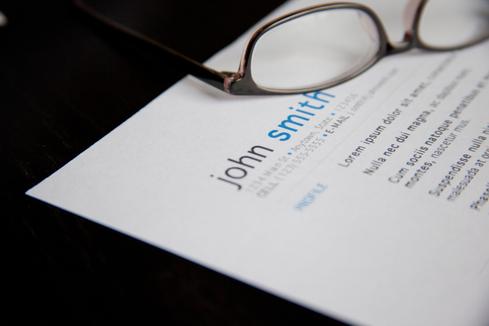Art Plus Technology Keeps Kids Out Of PrisonArt Plus Technology Keeps Kids Out Of Prison
When artists and courts come together to keep kids out of prison, data privacy is a key concern. The Young New Yorkers group uses Wall Street tools to solve the problem.


New IT Skills: Why Communication, Accountability, Initiative Are Hot Now
New IT Skills: Why Communication, Accountability, Initiative Are Hot Now (Click image for larger view and slideshow.)
Too many young people are going to adult prisons. Rachel Barnard thought art could help keep some of those kids out, and with Young New Yorkers she's showing that the idea can work. Along the way, Barnard's organization is also illustrating how sophisticated data protection and privacy techniques can be applied to keep safe the most sensitive personal information.
New York is currently only one of two states that automatically prosecutes 16- and 17-year-olds as adults. New York Governor Andrew Cuomo is pushing for passage of legislation that would raise the criminal age of responsibility to 18. Meanwhile, Barnard's Young New Yorkers group is stepping into the breach.
Although it is based in art, the program is not as simple as having young people who've been charged with misdemeanors draw pretty pictures. It takes involvement from the court, from social workers, teaching artists, and administrators. And all that involvement means moving highly confidential files among employees and volunteers. Young New Yorkers and Intralinks, which offers data privacy technology, are showing that this idea can work, too.
Rachel Barnard graduated from Columbia University with a Masters of Science (Advanced Architectural Design) in 2011 and was awarded the Goodman Fellowship for her public art proposal, Young New Yorkers. The proposal aimed to give voice to 16- and 17-year-olds given prison sentences classifying them as adults in New York State. The project has succeeded as art, and has been equally successful as a way to keep young people out of the adult justice system.
In a telephone interview with information, Barnard said, "We had our first class graduation in August 2012, and then we've been a start-up organization since then. We thought it was going to be a one-off program so there was a pause after that first class, then the courts encouraged us to start as an organization and we've been operating full time for about a year and a half, now." There are three programs within the organization's operations:
An eight-week diversion class.
A one-day intervention program.
A gun violence program.
Each serves a different need and slightly different population.

This is a collage from the inaugural Transforming Future Geographies program, which works with immigration-involved young people and debuted May 2015.
Barnard said the eight-week program involves a class of eight to 12 individuals who spend the time "...taking account for their actions and the choices they've been making [and] taking responsibility for the impact the choices that have led to their arrests have had on their lives and the lives of others, such as their family members and others who might have been involved in the actions." At the end of the program, a group art project results -- one that explores an aspect of the environment in which the young people live.
Some young people can go through the one-day intervention program, which is physically located in a courtroom near the bench where a judge first saw them, and have the opportunity to have their cases dismissed "in field" and their arrest records sealed. This combination can be a powerful tool in helping these young people avoid further contact with the police and judicial system.
In all of these cases, confidential files must move between the courts and Young New Yorkers. Barnard is blunt about the importance of strict confidentiality for the participants. "Privacy and security is key for the integrity of the program. One of the more tangible results is that kids have their arrest dismissed and sealed, or at least sealed, so they avoid having an adult criminal record. If their record of their crime and incident were made public that would undermine having no adult criminal record. It's vitally important that the information about our young people and the incident is kept confidential."
[ Want to make the hackers give up and go away? Read Making Hackers Obsolete by Making Data Inaccessible. ]
Records must be shared, but not for the entire length of the program. Barnard said that Intralinks allows the information to be shared and then un-shared on a dynamic basis. "We have a lot of part-time and temporary staff who come on board the program. We have teachers, we have teaching artists, we have a social worker, we have violence interruptors," she said. "The first half of the program is taking responsibility for our actions and being aware of the consequences. Everyone in the room knows the charges. We can share each program file with the people who need to see them, and then cease to share them, usually after the third class because we're moving from accountability into the aspirational part of the program."

Art work from an eight-week diversion program.
Pete Brown is director of product marketing at Intralinks. In a telephone interview, he said that Intralinks began in 1996 as a way for companies doing due diligence in a merger or acquisition to access electronic data in a secure, appropriately private, way.
"M&A required interested parties to go into a locked room where you signed in and out to complete your due diligence for mergers," Brown said. "We thought there could be a better way to do this if there were an area where people could log in and view the documents electronically. We were an early participant in the concept of an electronic data room."
The company expanded the concept in 2011 to include use cases such as clinical trials data and alternative investments. With Young New Yorkers, Intralinks VIA was the service chosen to give the organization the secure record sharing required by the courts. And the nature of Intralinks sharing technology means that the "un-sharing" can be as secure as the sharing.
Brown explained that files are encrypted as they're put into the Intralinks system. When access is granted to an individual, they un-encrypt the file as it is displayed on their computing device. When access to the file is revoked, the encryption key goes away, so even files that might have been copied onto another system can no longer be un-encrypted and viewed or manipulated.

Art from an eight-week diversion program
Barnard said that Intralinks VIA supports the privacy practices most Young New Yorkers volunteers are already familiar with. "Most of the volunteers have a social work background and come from the court system, so we have a partnership with defender services and they have an understanding of the privacy issues," she said.

A photo of the Love Letters to Brownsville exhibition. This is a voluntary, community program addressing gun violence in Brownsville. The participants were not court-involved.
Brown said that the Intralinks systems will be able to grow with Young New Yorkers over time. "I would like the program to be filled to capacity over the next three years so we have four or five staffers and are running several programs simultaneously," she said, "The overall vision is that I would like to develop larger scale installations of their [artwork]."
About the Author
You May Also Like






